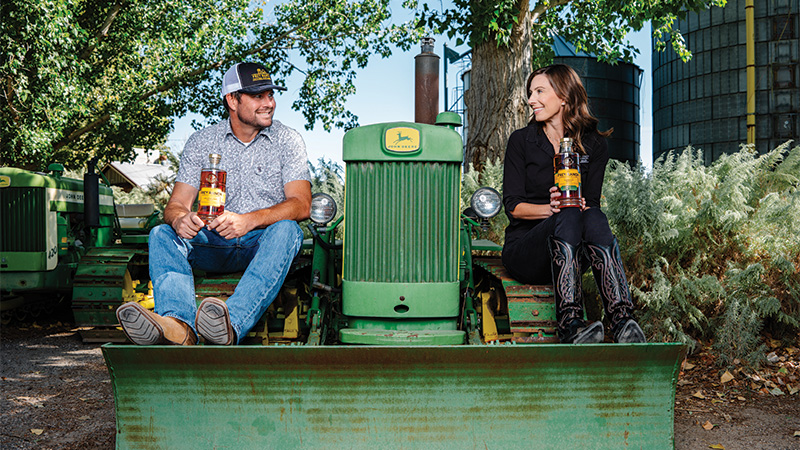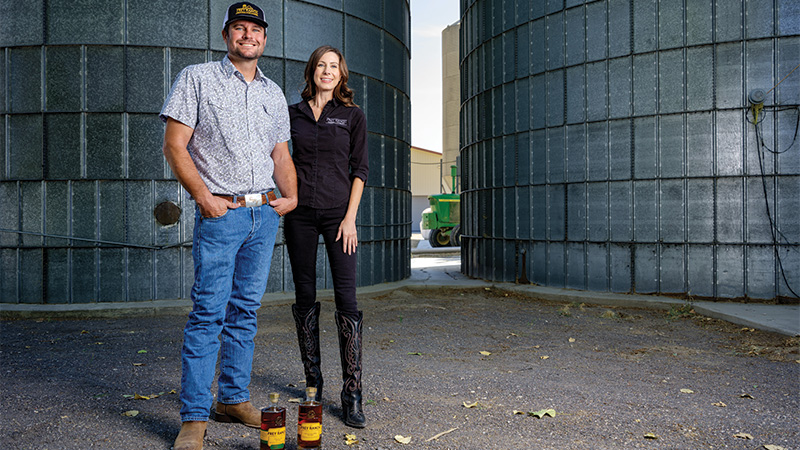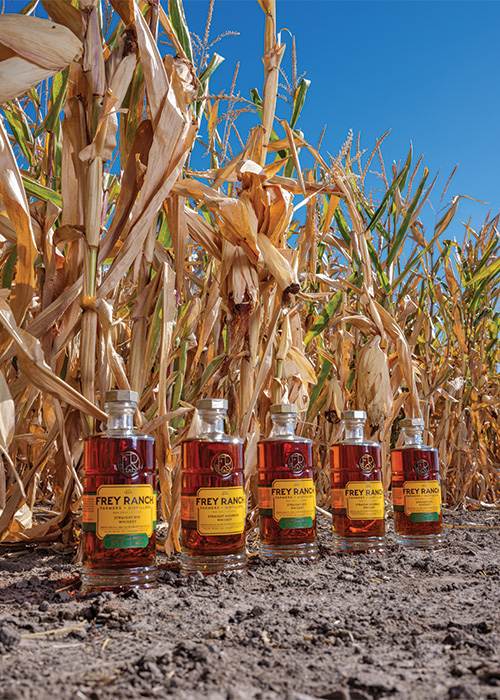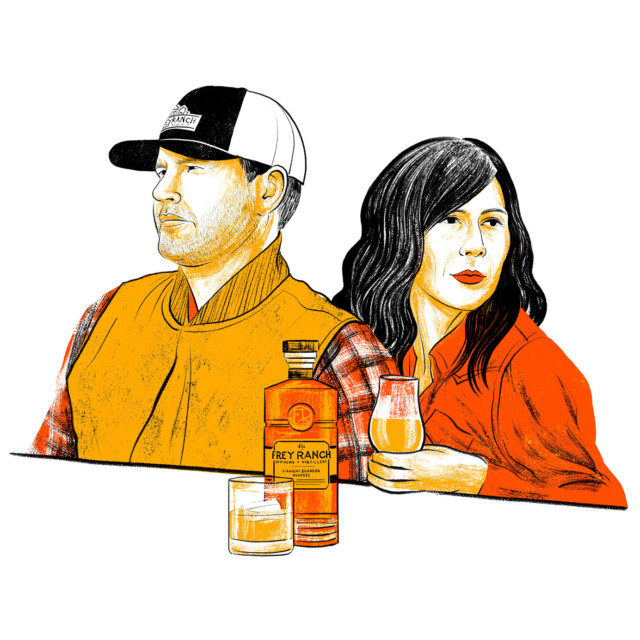This feature is part of our 2023 Next Wave Awards.
There’s no such thing as an overnight success story in the whiskey world.
Even if a new brand bursts onto the scene — shiny bottles dominating store shelves and social media feeds — presuming it distills its own liquid, the planning, processing, and logistical jump-roping had to have started years if not decades before. In the case of Frey Ranch, which has taken the whiskey world by storm over the last few years, the origin story begins all the way back in 2006.

Colby Frey had been raised on a 1,500-acre family farm where, from an early age, he repaired tractors and learned how to work the land. Eventually, he wanted to use that land to turn perishable rotation crops into something financially viable. So he talked the government into allowing him an experimental distilling license, one of the first in Nevada’s history. Along with his wife, Ashley, Frey started making gin, vodka, and wine with an eye to eventually getting into the whiskey game.
“We could make it, we could age it, we just couldn’t let anyone taste it,” Colby explains. “It was actually a blessing in disguise that we had such a long period of time to figure out what we wanted to make and how we wanted to do things.”
Of course, it was a far different whiskey world back then. The bourbon industry had just recovered a few years earlier from a three-decades-long glut. Eventual unicorn brands like Pappy Van Winkle and George T. Stagg were still new to shelves and hardly ballyhooed. There were almost no craft distilleries in America just yet, save a few innovators in California. Practically no one in the country produced or drank rye whiskey.

No prophet or oracle could have known just how much the American whiskey industry would change by the time the first bottles of Frey Ranch Straight Bourbon Whiskey hit shelves in 2020.
By that time, the question had become not whether anyone would care about a Nevada-based craft whiskey distillery, but how exactly one such brand could differentiate itself from the then-thousands of other craft producers? The Freys already knew the answer to that.
“A lot of craft distillers started because they love whiskey,” Colby says. “Frey Ranch started because we loved agriculture.”
At this point, we should take this story back even further, to the 1850s.
Nevada is not a place most people necessarily think of as ideal for farming, but agriculture in the region dates back over a century and a half to when the Frey family started farming in Fallon, right outside Reno.
Believe it or not, Frey Ranch is one of the few distilleries in the world that grows 100 percent of its grains. This includes all four grains that go into the brand’s bourbon mash bill: corn, winter cereal rye, winter wheat, and two-row barley — all non-GMO, naturally. When the Freys say “grain to glass,” they aren’t BS-ing. Everything is grown, mashed, malted, distilled, matured, and eventually bottled on-site.
“Nevada is actually an ideal climate for growing grains. The hot summers are great for corn and wheat, the cold winters for rye,” Ashley says. “And with these better inputs you end up with better outputs.”

What’s perhaps most remarkable is how Frey Ranch has ascended to such a lofty status in the eyes of whiskey drinkers — nerds and taters alike — without any sorts of gimmicks or shenanigans. There are no oddball finishes, no cartoonish sticker labels, no celebrities, no gauche packaging (though, to be fair, the brand’s handsome bronze cork toppers are as heavy as a paperweight), and no limited releases that cost an arm and leg.
It’s simply great whiskey coming from the land.
“The reception to it validates our thinking,” Colby says. “Why aren’t other distillers talking about the grains?”
